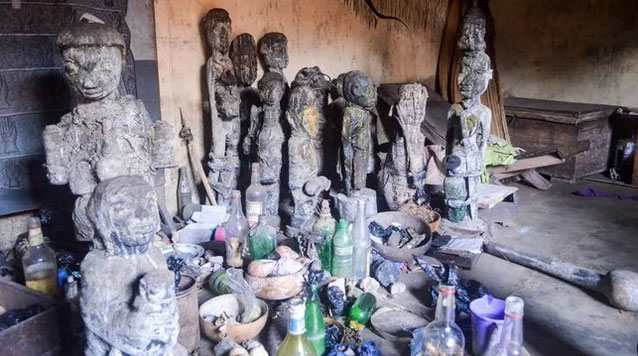Researchers Examining the Walls of a Ritual Tomb in Benin Discover Human Blood Proteins.
According to legend, nearly 200 years ago, human blood was said to have been incorporated into a ritual tomb built within the royal palace complex in what is now Benin. Now, an investigation into the proteins found in the walls of the tomb has revealed evidence supporting the truth of this legend.

Modern Benin is the center of the ancient Vodun religion of Africa, where animal sacrifice rituals are performed. (Photo: jbdodane/Alamy)
According to a new study, the tomb located in Abomey, which was once the capital of the Kingdom of Dahomey in West Africa, contains proteins that can only originate from human blood, confirming the region’s horrific history.
This is one of the first times such a discovery has been made through “paleoproteomics”, the study of trace proteins remaining in archaeology.
Biochemist Jean Armengaud, an expert in ancient proteins at the French Atomic Energy and Alternative Energy Commission, stated: “This discovery is significant because it provides concrete evidence of historical rituals and practices.”
Armengaud is the lead author of the new study, recently published in the journal Proteomics. He and his colleagues examined samples taken from the tomb between 2018 and 2022, during excavations conducted by archaeologists from France and Benin.
According to local legend, the tomb within the Abomey palace complex – built in the 19th century by King Ghezo of Dahomey to honor his brother, King Adandozan – was constructed with plaster containing the blood of 41 sacrificed individuals.
Ghezo, who ruled from 1818 to 1858, was known for leading several military expeditions against the powerful Yoruba state in the region, the Oyo Empire, thereby ending the annual slave tribute of the Kingdom of Dahomey.
He is regarded as a powerful ruler. Historical records indicate that the path to his hut was paved with the skulls and jawbones of defeated enemies, and one of his thrones was placed upon the skulls of four enemy leaders.


















































